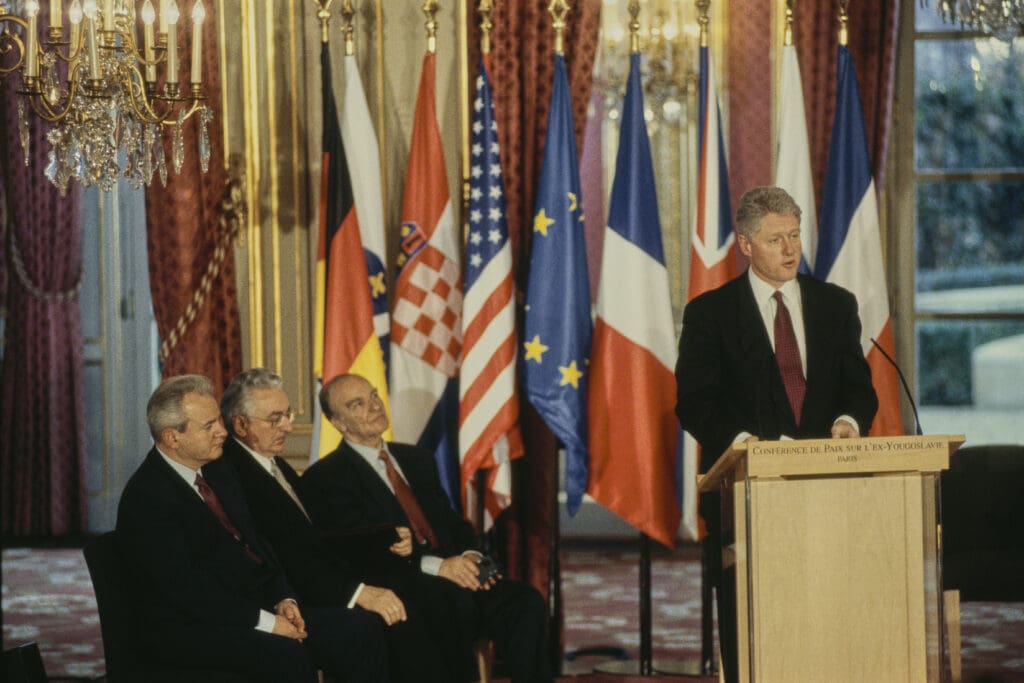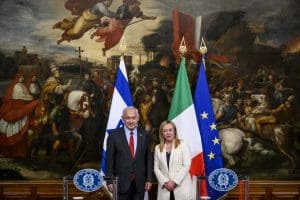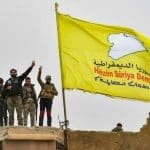Every year on July 11, Western ambassadors and dignitaries alike flock to the Potočari memorial center in eastern Bosnia to commemorate the Srebrenica genocide of 1995. 29 years ago, Bosnian Serb paramilitaries murdered more than 8,000 Bosniak men and boys en masse over the course of eight to ten days. In May 2024, the United Nations declared a day of remembrance for the victims of the Srebrenica genocide. But this year, more than any, the emptiness of the West’s “condemnation” of the Bosnian genocide was on full display, given its current support of Israel’s genocide of Palestinians in Gaza. However, the West’s hypocrisy regarding the Srebrenica genocide is much deeper than meets the eye. In fact, it was the US, Britain, and France that handed over the Srebrenica “safe zone” to its Bosnian Serb butchers in order to justify further intervention in the Balkan region.
In 2005, the American diplomat Richard Holbrooke, who brokered the Dayton Accords to officially end the war, told Bosnian Hayat TV: “I was under initial instructions to sacrifice Srebrenica, Goražde and Žepa.” And that’s exactly what he did. Over the course of the three-year-long war, Bosniaks were ethnically cleansed from their villages by predominantly Serb paramilitaries but also Croat ones, to a lesser extent. Serbian President Milošević and Croatian President Tudjman had met before the war to devise a plan to partition the country for themselves. Bosniak refugees were funneled into what were assured to be the so-called “safe zones” of Srebrenica, Goražde, and Žepa. Once they arrived, they were disarmed completely and left with a meager Dutch peacekeeping force that was recently found guilty of willingly handing over many Bosniaks to their death. The US itself had intelligence and satellite imagery monitoring not only Serb troop movements in the lead-up to July 11 but throughout the duration of the massacre itself. Satellite imagery showed the bodies piling up in the killing fields, but no one did anything.
But this year, more than any, the emptiness of the West’s “condemnation” of the Bosnian genocide was on full display, given its current support of Israel’s genocide of Palestinians in Gaza.
In the wake of the massacre, the US garnered international support for its campaign to bomb Serb positions in Bosnia and lead the post-war process. This was the first time the so-called “defensive” North Atlantic Treaty Organization (NATO) launched an aggressive military campaign. As part of the so-called peace process, the Dayton Accords partitioned the country according to ethnicity: the Serb autonomous Republika Srpska and the Bosniak and Croat majority Federation of Bosnia and Herzegovina. Within that agreement, NATO troops were to be deployed to Bosnia, the first ever troop deployment outside of NATO member states. What was previously a nominally socialist, multi-ethnic country has since turned into a cesspool of neoliberalism, including austerity cuts, privatization of state-owned assets, environmental degradation, and misery for the masses of people. Now, Bosnia and all Balkan countries are encircled by the vultures of the world, including the US, China, and Russia, who are happy to profit from the bloodshed.
That’s not to say that the Bosnian war was solely a Western creation, far from it. Yugoslavia’s internal divisions and inequality between nations laid the groundwork for armed conflict that was fostered, promoted, and waged by the ruling elite from the wealthiest republics.
Yugoslavia’s History of Unity and Divisions
In the decades since the wars related to the break-up of Yugoslavia ended, many have asked, perplexed: how could a country where various nations lived in relative peace end in such bloodshed—a country that was formed in the wake of and due to multi-national resistance to the Nazi occupation during World War II? The answer lies at the crossroads of economics and history.
As Serbian forces took Srebrenica, the war criminal Ratko Mladić told cameras that “the time has come to take revenge on the Turks in this region.” The Turks he was supposedly referring to were Bosniaks, who he was intent on exterminating from the area to support Serbia’s territorial claims in Bosnia. During the 500+ year-long rule of the Ottoman Empire in the Balkans, both voluntary and involuntary conversion of the native populations to Islam was facilitated, including Christians, Catholics, and the Bogomils. Due to this history, Serbs and Croats both claim Bosniaks as belonging to their respective nation. Along this line of reasoning, many insist that Bosniaks simply do not exist as a separate nation.
However, this logic ignores the historical development of nations and how they evolved over the transitory period between feudalism and capitalism. It is true that during Ottoman rule, Muslims enjoyed greater privileges than non-Muslims. Bosniak landowners were part and parcel of the Ottoman’s crushing rule in Bosnia, which oppressed not only poor Serb and Croat peasants but also Bosniaks. Multiple times, peasants of all these backgrounds rebelled against the empire of the day. From 1831 until 1875, poor peasants of all religions and backgrounds launched five different armed uprisings against the Ottoman Empire. With each rebellion, Bosniaks separated their national identity more and more from the ruling Turkish elite. In 1882, Serbs and Bosniaks also rebelled against the Habsburg military recruitment law, which would have conscripted young men. While Bosniak landowners were generally loyal to the Ottomans, peasants of all stripes had more in common with one another than the landowners.
During the Habsburg rule in Bosnia, Bosniak landowners lost the political and economic power they had during the Ottoman Empire. Catholic and Orthodox landowners were seen as more reliable bulwarks against the Ottomans; thus, the feudal power dynamic was flipped on its head. The development of the Serbian nation was nurtured by the Russian Tsar, using Pan-Slavism as a smokescreen to extend its own influence in the region while the Catholic Habsburg empire coopted the Croatian national movement in an effort to defeat Hungarian pro-independence forces. In doing so, these powers helped develop the capitalist classes of both the Serbian and Croatian nations which both sought to convert and claim Bosniaks as their own.
The oppression of Bosniaks further solidified under the First Yugoslavia from 1918 until 1941. At the beginning of the Yugoslavia monarchy, 2,000 Bosniaks were killed by Serb and Croatian paramilitaries in just two years. In 1919, land reforms nationalized eight million acres of Bosniak land, leaving 10% of Bosniak peasants without any means of production.
Capitalist Yugoslavia with Socialist Trimmings
Nazi Germany took advantage of this division in 1943 and promised Bosniaks a Muslim state if they cooperated. As such, a battalion of 21,000 Bosniak soldiers was formed to fortify the German occupation. The battalion was commanded by the SS officer, Himmler. Despite German support, the Bosniaks were still under attack from the other fascist forces of the region, including Serbian Chetniks and Croatian Ustasha. This caused many Bosniaks to join the multi-national Partisans led by the Communist Party of Yugoslavia.
Under the motto of “Brotherhood and Unity,” Yugoslavia made some surface-level efforts to address the national oppression of Bosniaks. In 1963, the Socialist Federal Republic of Yugoslavia recognized a “Muslim nation” (referring to Bosniaks) as a constituent nation. Secularism was widely promoted; however, there was not a concerted campaign to break down reactionary ideologies that claimed Bosniaks as “merely” Islamized Serbs or Croats. In particular, chauvinism reigned supreme and reinforced economic inequalities between the wealthier nations (Serbs, Croats, and Slovenians) as compared with the poorer ones, including the Muslim Bosniak and Kosovar-Albanian populations.
During the lifespan of Yugoslavia, there was an economic inequality between republics and nations that ultimately helped bring about the country’s demise. From 1953 to 1989, Bosnia’s gross domestic product (GDP) per capita decreased by 20 percent while GDP either remained the same or grew in the three wealthiest republics: Serbia, Slovenia, and Croatia.

The impoverishment of oppressed nationalities like Bosniaks was further facilitated through the divisions in production. Raw materials were largely extracted from poorer republics and transported to wealthier ones to be refined. While many on the left still laud “Tito’s socialism,” a few additional facts illuminate the fact that Yugoslavia was simply a state-capitalist society with more social welfare programs. Over the lifetime of Yugoslavia, wage inequality increased instead of decreased; early on, wages between managers and workers were 1:3.5. By 1967, the ratio was 1:20. This was facilitated by so-called workers self-management councils, which bestowed managers, engineers, and white-collar workers with more power than the workers performing manual labor. As such, the Yugoslav “socialist” system, in effect, reproduced capitalist relations.
Between 1972 and 1982, Yugoslavia’s foreign debt increased ninefold from $2.4 billion to $20.3 billion. In the 1980s, the World Bank and International Monetary Fund (IMF) used this debt to propose structural adjustment loans meant to privatize as much of Yugoslavia’s economy as possible. The austerity program was initially struggled against by a movement that crossed ethnic lines but was ultimately exploited by the reactionary nationalist elite.
Throughout the late eighties and early nineties, half a million people took part in labor strikes against wage freezes, layoffs, increases in food and fuel prices, and the decadence of the ruling class. Reports about a strike in Slovenia noted that in addition to the economic demands, “The workers also demanded that the government slash the number of factory administrators, limit the number of limousines used by factory executives, and restrict their business travel.” Due to the corruption of the self-management committees and the bankruptcy of the Communist Party, workers became disillusioned with the establishment leadership. And thus, an opportunity emerged for reactionary nationalist groups to pit various ethnic groups against each other instead of blaming the multi-national, capitalist elite.
For example, the right-wing Croatian Democratic Union political party blamed Serbs for the strikes in Croatia. The local party chapter said of one CEO that “he and other Serbs were to blame for the bad condition the company is in.” The Serbian elite claimed the “Serbs wanted to work, while the Croats didn’t.” At a session of the workers’ council, a female worker ominously warned against the strategy of the ruling elite, asking, “Will we swallow the bait of such tricks and misguided information, used by the most lazy among us to create divisions, when all of us will be equally hungry tomorrow: Croats, Serbs and Muslims alike!”
Foreign Involvement in Bosnia
Such was the reactionary nationalism that ultimately led to the state-supported Serb forces pillaging, looting, and exterminating Bosniak villages in Bosnia. Such was the reactionary nationalism that led to the Croatian government forcibly displacing its Serbian population at gunpoint, leading to the ethnic cleansing of 200,000 Serbs from eastern Croatia. The main reason why the West did not support Serbia’s attempts to keep the union together at will was to expel Russian influence from the region. It would be easier for the US to counter Russian influence if it was sequestered to Serbia as opposed to spread across six republics.
In addition to representing the Ottoman Empire, the Serbian and Croat ruling classes justified their territorial ambitions as fighting “radical Islam.” They characterize Bosniaks as Islamic fundamentalists who sought to implement sharia law and oppress non-Muslims in an Islamic state. Bosniaks are generally secular, but there were members of their own ruling elite who promoted such ideology.
For example, Alia Izetbegović, who became a member of the Presidency of Bosnia, had in the 1970s written an Islamic Declaration with hopes for Bosnia’s future as an Islamic state, which stated, “There can be neither peace nor coexistence between the Islamic religion and non-Islamic social and political institutions.” During the war in Bosnia, Saudi Arabia and Iran both sent mujahideen to fight on behalf of Bosniaks. While Serb and Croat-led paramilitaries did most of the plunder of Bosnia, it is reported that these fighters and Bosniak war criminals participated in ethnically cleansing Serbs and Croats in central Bosnia as well. In addition, Saudi-funded Wahhabi groups have funded mosques throughout the country and recruited members of the poor working-class youth to advance Wahhabism. In short, as the US Army War College paper says: “Bosnian Serbs and Croats may exaggerate the threat of Islamism or potential Islamic dominance, but the Bosniak leadership certainly provides them with plenty of ammunition.”
In addition to Saudi Arabian Wahhabi forces, Turkey uses its historical and religious ties with Bosniaks to disguise its own self-interest in the region. In the 1990s, Turkey became part of the UN wartime peacekeeping mission. After the end of the war, it joined the NATO occupation of the country and had the second-largest number of troops in Bosnia. Turkey’s economic ambitions in the country became clear in a speech by Turkish politician Davutoğlu in Sarajevo in 2009. At an event titled “Ottoman Heritage and Muslim Communities in the Balkans Today,” he proclaimed, “Now is the time for reunification” by “reestablishing ownership in the region, through reestablishing multicultural coexistence, and through establishing a new economic zone.” Since then, Turkey has steadily increased its influence in Bosnia via investments in telecommunication, energy, transportation, health, tourism, construction, and banking. Today, Bosniaks see Turkey as their most significant and reliable ally.
The most surprising player during the Bosnian war, however, is Israel. During the wars of the 1990s, Israel exported arms to the Serbian army, which were almost certainly used in the Bosnian genocide. In 2016, Israel’s State Attorney deemed that disclosure of Israel’s role in the Bosnian genocide posed a threat to Israel’s national security and foreign relations: a de facto admission of guilt. The butcher of Srebrenica and Bosnia, Ratko Mladić, wrote in his journal, “From Israel – they proposed joint struggle against Islamist extremists. They offered to train our men in Greece and a free supply of sniper rifles.” More recently, Israel abstained from a United Nations vote designating July 11 as the International Day of Reflection and Commemoration of the 1995 Genocide in Srebrenica.
Bosnian War Repercussions
When all was said and done, more than 200,000 people were killed in Bosnia, the vast majority (160,000) Bosniaks, 30,000 Croats, and 25,000 Serbs. 20,000 Bosniak women and children were raped in concentration camps while villages were looted and plundered by Serb and Croat forces. Two million people, mostly Bosniaks, were driven from their ancestral homes, and the economic cost of the war is estimated to be approximately $80 billion. Today, Bosnia and Herzegovina (along with other Balkan countries) ranks amongst the highest in terms of poverty and emigration in Europe. While the war has ended, the ideas and tensions that gave rise to it live on.
Most Serbs do not recognize the systematic killing in Srebrenica as a genocide, as they are convinced by their own ruling elite that admission of this massacre makes Serbs a “genocidal nation.” In this way, the ruling elites of the Balkan countries continue the tradition of masking class differences with reactionary nationalist fervor. They do this skillfully to avoid scrutiny of their own exploitation of the masses and to divert attention from their culpability in war crimes of the 1990s. Such is the case with Serbian President Aleksandar Vučić, who in the 1990s famously proclaimed, “For every Serb you kill, we will kill 100 Muslims.”
In the West, US intervention in Bosnia is widely seen as a successful “humanitarian mission.” For those on the left, it can be regarded as an effective way to bring a disobedient country to its knees. As soon as the Soviet Union collapsed, the US used its position as the most powerful imperialist to allow for and then coopt the massacre of Bosniaks for its own geopolitical interests. The US was happy to carve up the region for itself. However, it cannot be seen as the sole reason for Yugoslavia’s demise. In order to divide and conquer, there must be divisions to exploit. Until the people of the Balkans come to terms with this, the US, Turkey, Russia, and now China will continue to steal the wealth of the masses of each and every country in the Balkans, paying no mind to their religion or ethnicity.






